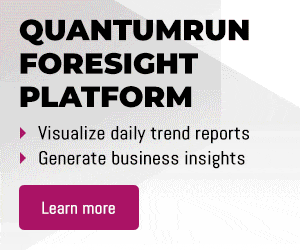High-throughput phenotyping: Genes and machines collide
High-throughput phenotyping: Genes and machines collide
High-throughput phenotyping: Genes and machines collide
- Author:
- April 16, 2025
Insight summary
High-throughput phenotyping is changing how scientists study plants and cells by using automation and data-driven models to analyze biological traits with greater accuracy. In agriculture, it improves crop breeding and drought resistance, while in medicine, it helps researchers understand diseases and develop targeted treatments. As these technologies advance, they could reshape industries, influence government policies on genetic data, and create both opportunities and challenges in farming, healthcare, and global trade.
High-throughput phenotyping context
High-throughput phenotyping is transforming how scientists analyze complex biological traits in both plant and cell research by rapidly collecting vast amounts of data. In agriculture, field-based high-throughput phenotyping is used to assess key agronomic traits like grain yield and plant height by integrating drone-based imaging and statistical modeling. A 2024 study published in G3 Genes|Genomes|Genetics demonstrated how functional principal component analysis can enhance the prediction of maize yield by incorporating temporal vegetation indices collected across multiple years and environments. Meanwhile, in cell biology, high-throughput mechanical phenotyping is evolving through techniques such as ELASTomics, which integrates nanopore electroporation with single-cell sequencing to simultaneously measure cell surface tension and gene expression. This method was developed by Japanese researchers in 2024.
By leveraging automation and advanced computational models, high-throughput phenotyping enables researchers to decode genetic and environmental influences on biological traits with unprecedented precision. For instance, a 2024 study published in the New Phytologist journal integrated genome-wide association studies with high-throughput phenotyping to examine wheat’s response to drought stress, analyzing over 28,000 digital traits using machine learning. This approach identified significant genetic markers linked to drought resistance, such as the TaPP2C6 gene, which regulates wheat’s ability to tolerate water scarcity without compromising yield.
The rapid progress of high-throughput phenotyping is set to transform multiple scientific fields by enabling more efficient, data-driven approaches to trait analysis. In agriculture, integrating phenomic and genomic data is improving the accuracy of crop breeding models, ensuring better adaptation to environmental challenges. In biomedical research, techniques like ELASTomics are unlocking new ways to study cellular behavior at the single-cell level, aiding drug discovery and regenerative medicine. As these technologies continue to evolve, their ability to bridge the gap between genotype and phenotype will have significant implications for improving food security, understanding diseases, and optimizing biological systems.
Disruptive impact
Precision agriculture, driven by drone imaging and genetic analysis, could lead to more affordable, nutrient-rich crops, enhancing diet quality. Additionally, food labeling may evolve to highlight specific genetic or environmental optimizations, offering consumers clearer insights into health benefits. Meanwhile, individuals working in farming, data science, and biotechnology may see a shift in job roles, requiring stronger skills in data interpretation and machine learning. In healthcare, single-cell mechanical phenotyping could improve early cancer detection and personalized treatments, affecting how people manage diseases.
Businesses in agriculture and biotechnology may need to rethink their strategies as data-driven breeding and disease detection become standard. Companies specializing in drone technology, artificial intelligence, and genome editing may gain new opportunities to offer predictive models and automation tools. Large agribusinesses may adopt these tools to reduce production risks, but small farms could struggle to afford them, potentially increasing industry consolidation. Food and pharmaceutical companies may use high-throughput phenotyping to develop crops with tailored nutritional profiles or medicines designed for individual genetic markers. Additionally, insurance companies may refine agricultural and health risk assessments using real-time phenotyping data.
Governments may need to update regulations and policies to address data privacy, food safety, and genetic modification concerns. Precision agriculture may lead to new subsidies or tax incentives for sustainable farming practices, while stricter rules may be required to manage the ethical use of genetic data. Countries investing in biotechnology research may strengthen their food security, while those lagging behind may become more dependent on imports. Additionally, the global trade of genetically optimized crops may trigger new debates about labeling, intellectual property rights, and trade restrictions. Policymakers may also consider integrating high-throughput phenotyping data into climate adaptation strategies, using real-time plant and soil data to optimize water use and land management.
Implications of high-throughput phenotyping
Wider implications of high-throughput phenotyping may include:
- Farmers relying more on data analytics and automation, leading to a decline in traditional farming methods and a shift in required skill sets.
- Companies developing personalized nutrition products based on phenotypic data, leading to new markets for customized food and supplements.
- Governments setting stricter regulations on genetic data collection, leading to debates over data ownership and privacy rights.
- Increased reliance on high-tech equipment in agriculture, leading to a growing digital divide between large agribusinesses and small farms.
- Advances in plant breeding reducing dependence on chemical fertilizers and pesticides, leading to lower environmental pollution.
- Countries investing heavily in phenotyping research to enhance food security, leading to changes in global trade dynamics and agricultural exports.
- Automated phenotyping systems reducing the need for manual labor in agriculture, leading to job losses in rural areas but increased demand for tech-based roles.
- More efficient use of water and soil resources in farming, leading to improved sustainability and resilience to climate change.
- Health insurance companies integrating phenotypic data into risk assessments, leading to personalized coverage plans but raising ethical concerns.
- Governments funding public research in phenotyping technologies, leading to greater accessibility of data for climate adaptation and disease prevention.
Questions to consider
- How could high-throughput phenotyping change how you choose food and healthcare options in the future?
- How could governments balance the benefits of genetic and phenotypic data with the need for privacy and ethical regulations?
Insight references
The following popular and institutional links were referenced for this insight:



